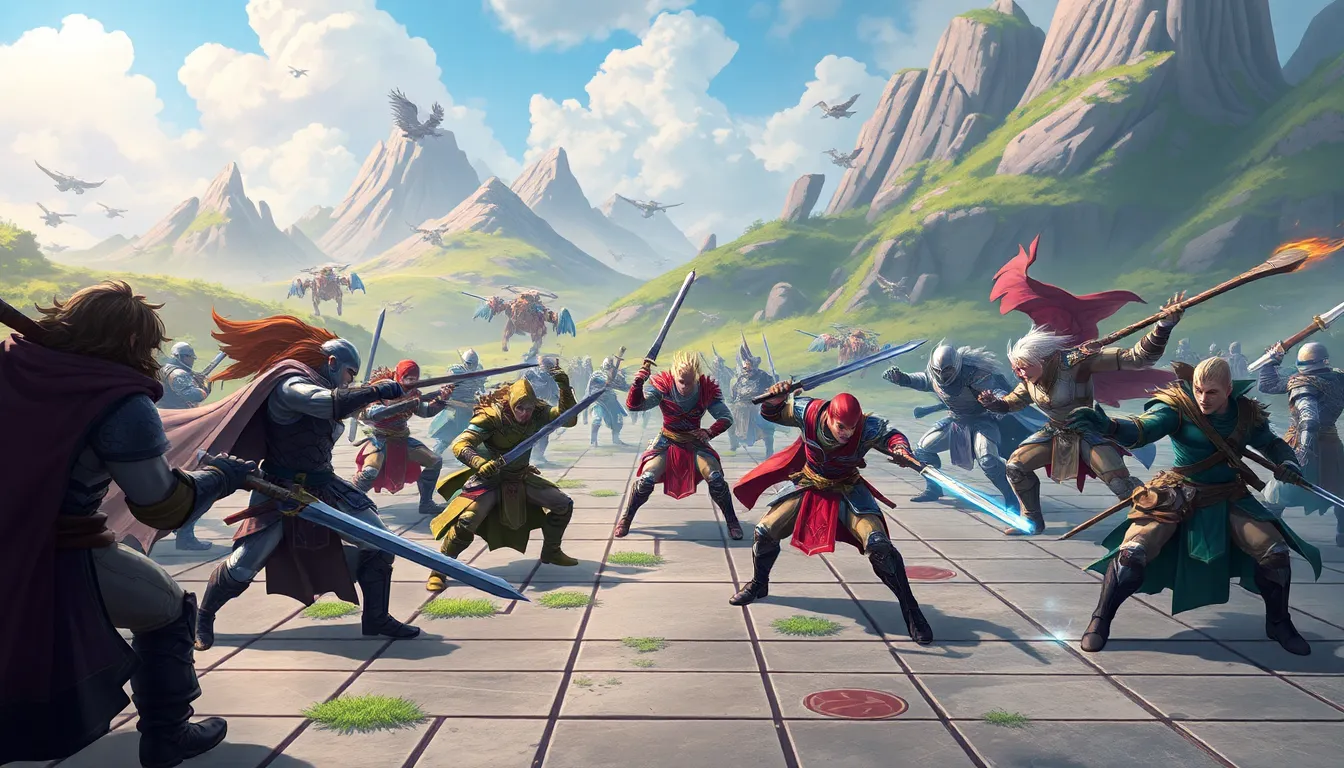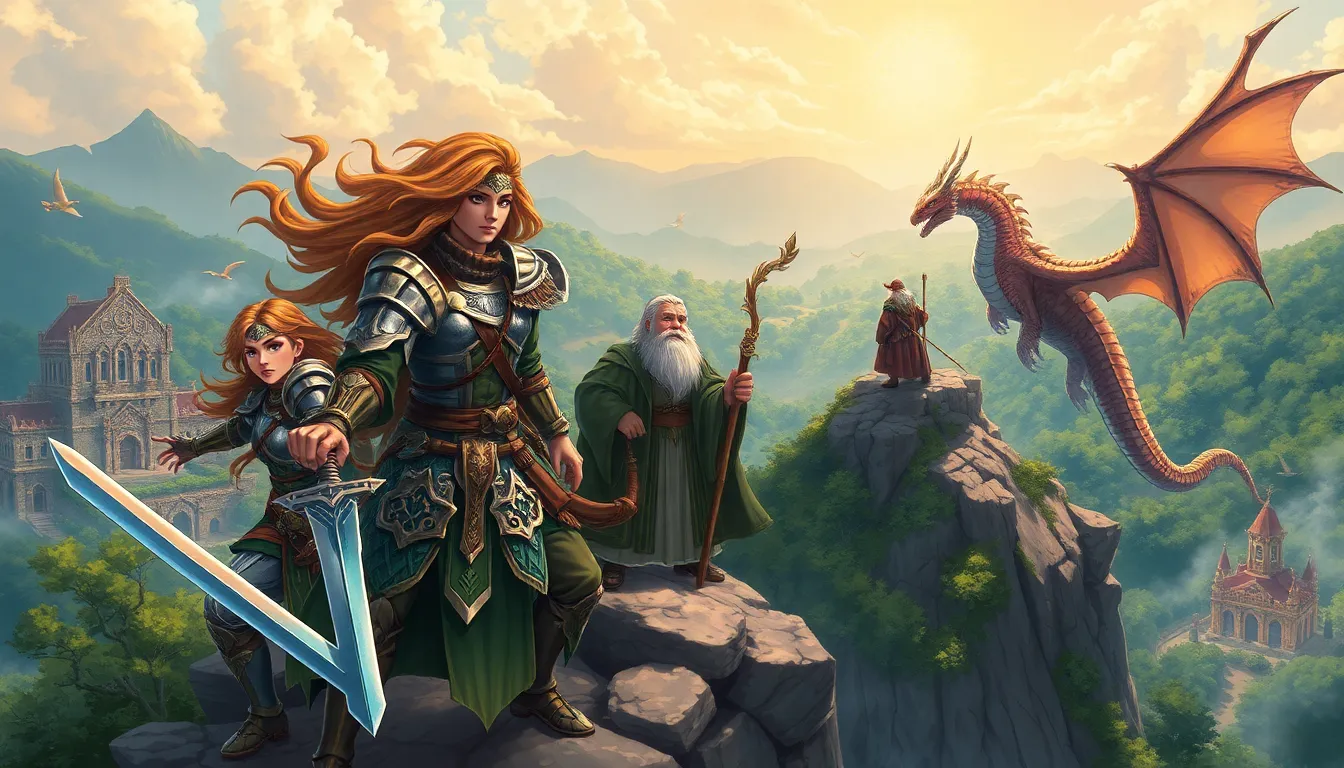In a world where dragons roam and heroes rise, strategy RPGs have carved out their own epic niche. These games aren’t just about slashing swords and casting spells; they demand brains as much as brawn. Picture this: you’re not just a player; you’re a master tactician plotting your next move while your friends are busy trying to figure out which button does what.
Strategy RPG
Strategy RPGs combine tactical gameplay with traditional role-playing elements, demanding strategic thinking in addition to combat skills. Players take on the role of tacticians, navigating complex scenarios involving character development and resource management.
Definition and Characteristics
Strategy RPGs feature turn-based combat where players strategically position characters on grid-based maps. Players often manage a party of diverse characters, each with unique abilities, strengths, and weaknesses. Elements like character progression, story-driven quests, and world exploration enhance the gameplay experience. Additionally, players face varying challenges that may involve solving puzzles or negotiating alliances, emphasizing strategic planning beyond mere combat. Resource management proves crucial as players allocate skills and items effectively, affecting overall party performance.
Popular Examples
Several notable examples showcase the depth of strategy RPGs. Fire Emblem series features tactical battles intertwined with character relationships, allowing for strategic alliances. Final Fantasy Tactics emphasizes rich storytelling alongside intricate combat systems, attracting players with its complex gameplay. XCOM merges strategy and RPG elements through tactical squad-based battles against aliens. Divinity: Original Sin 2 introduces players to a deep narrative, extensive character customization, and tactical combat choices. These games exemplify the genre’s ability to challenge players’ strategic thinking while providing immersive worlds to explore.
Key Elements of Strategy RPGs

Strategy RPGs blend tactical warfare with role-playing elements, emphasizing careful planning and decision-making. Key components such as tactical combat and character development create engaging gameplay experiences.
Tactical Combat
Tactical combat serves as the backbone of strategy RPGs. Players navigate grid-based maps, positioning characters to exploit strengths and weaknesses. Each move requires foresight, as the outcome often hinges on strategic placement. Attack and defense depend on terrain and unit types, encouraging players to consider multiple factors. For instance, some units excel in melee confrontations, while others specialize in ranged attacks. Turn-based mechanics allow for thoughtful analysis of each action before execution. Successful players recognize the importance of coordination among team members. Engaging in these tactical decisions becomes essential for overcoming complex challenges.
Character Development
Character development enhances the immersive experience in strategy RPGs. Players invest time in leveling characters and customizing their skills and abilities. Each character typically possesses unique traits, encouraging diverse strategies. As players progress, they unlock new skills or improve existing ones, expanding their tactical options. Relationships among characters often influence their effectiveness in battle. Players may prioritize building bonds to unlock powerful synergies. In many games, choices made during quests affect character stories and growth. Ultimately, the evolution of characters adds depth to the gameplay, making every decision count in their journey.
Popular Strategy RPG Titles
This section highlights notable titles across classic and modern releases within the strategy RPG genre.
Classic Games
Classic strategy RPGs set high standards, introducing mechanics that shaped the genre. Fire Emblem debuted in 1990, blending tactical combat with character romance, significantly influencing subsequent games. Final Fantasy Tactics, launched in 1997, became renowned for its complex story and tactical depth that continued to attract dedicated followers. Tactics Ogre, released in 1995, further enriched the genre with its emphasis on choices impacting the narrative. Shining Force, a 1992 title, combined turn-based gameplay with RPG elements, popularizing accessible mechanics for newcomers. Together, these games established benchmarks that continue to resonate in modern iterations.
Modern Releases
Modern strategy RPGs innovate while honoring their roots, delivering engaging experiences. Fire Emblem: Three Houses revitalized the series in 2019, featuring multiple storylines influenced by player choices. XCOM 2, launched in 2016, merges strategic gameplay with RPG elements, emphasizing squad management and tactical decisions. Divinity: Original Sin 2 gained acclaim for its deep storytelling and intricate combat systems, offering players rich narrative choices. Triangle Strategy, released in 2022, stands out for its compelling story and decision-making mechanics impacting the world around players. These titles exemplify how the genre evolves, maintaining strategic depth while enticing a diverse audience.
The Evolution of Strategy RPGs
Strategy RPGs have a rich history that reflects their growth and transformation.
Historical Development
The genre emerged in the late 1980s with titles like Fire Emblem and Tactics Ogre. These classic games introduced strategic elements, combining turn-based combat with deep character narratives. Players maneuvered characters on grid-based maps, emphasizing tactical positioning. As technology advanced, games like Final Fantasy Tactics expanded storytelling capabilities and character customization options. The early 2000s saw a surge in innovative mechanics and graphics, broadening the appeal of strategy RPGs. Titles like XCOM integrated squad-based tactics, fusing RPG elements with strategic gameplay. Ultimately, this historical development shaped a diverse genre with rich mechanics and engaging worlds, appealing to a wide range of players.
Future Trends
Looking ahead, trends in strategy RPGs indicate a focus on multiplayer experiences and enhanced AI. Developers are exploring online co-op modes, allowing players to strategize with friends. Innovations in procedural generation may lead to dynamic maps and unpredictable challenges, increasing replayability. Moreover, the integration of virtual reality could offer immersive battle environments, enhancing tactical decision-making. Gamers might also see more narrative-driven experiences, with choices affecting character arcs and world outcomes. As technology evolves, strategy RPGs are poised to attract new audiences while continuing to challenge existing players with deep, engaging gameplay.
Conclusion
Strategy RPGs represent a captivating fusion of tactical gameplay and immersive storytelling. They challenge players to think critically while navigating complex battles and character relationships. The genre’s evolution from classic titles to modern innovations showcases its adaptability and enduring appeal.
As technology advances and new gameplay mechanics emerge, strategy RPGs are poised to attract even more enthusiasts. With a focus on multiplayer experiences and enhanced narratives, these games will continue to engage players in rich worlds filled with strategic depth. The future looks bright for strategy RPGs, promising to keep both seasoned tacticians and newcomers on their toes.

